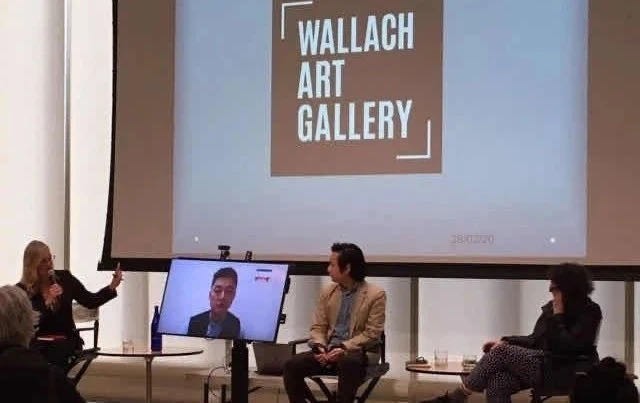Year of Water: Chinese artists turning water pollution into art

Since the beginning of 2020, the world has focused on the COVID-19 pandemic. Many countries have been mobilized amid the spread of the virus to respond to this crisis. The makeshift hospitals built in Wuhan are reminiscent of the images left by 1918 Pandemic (H1N1 virus). The panic and traumatic memories of humans facing a large-scale infectious disease have not been seen at this scale for more than a century.
The unfortunate situation brought about by this pandemic can be said to be a part of the global ecological crisis that has erupted frequently in the 21st century. In recent years, the art world has been actively responding to such ecological crises with: ecological art exhibitions, art institutions shifting attention to ecological issues, and interdisciplinary international collaborative research and creation, which have all contributed to bringing an awareness of these issues to visual arts audiences.
On February 28th, as part of Columbia University's "Year of Water" series project, the "Waterways in Contemporary Chinese Ecological Art" panel discussion was held at the Wallach Art Gallery in New York. The panel was co-presented by the Wallach Art Gallery, Columbia Global Centers | Beijing, and Columbia University School of Arts. Eric Fan Feng, Assistant Professor at Institute of Contemporary Art at Tsinghua University, gave the keynote speech. Betti-Sue Hertz, director and chief curator of the Wallach Art Gallery, Sophia Kidd, art critic and curator, and Brooklyn-based visual artist Yi Xin Tong joined the panel discussion.
Since the 20th century, the natural environment has been redefined by human beings. More and more contemporary artists are addressing new themes such as the need to overcome natural disasters and using art to warn of environmental pollution. Artists no longer focus on describing ideal natural landscapes, but are committed to revealing the threats of destroyed natural environment to human beings. With the appearance of environmental organizations, related laws and regulations, artists began to engage in environmental protection and sustainability movements. Nowadays, with social development and technological progress, the connotation and extension of art into this new sphere is quietly changing our expectations for how art can play a role in our understanding of the relationship between humans and nature. As the concept of "Anthropocene" has gradually become the consensus in scientific, cultural, and ideological communities, more and more artists are also showing keen ecological care and insight in artistic practice.
In recent years, the Chinese contemporary art community has also been actively observing, reflecting on and documenting various ecological crises. This trend has been reinforced by numerous ecological art exhibitions, art institutions’ attention to ecological issues, and interdisciplinary international collaborative research and creation.
This discussion focused on”waterways” and the ancient concept of "shan shui," which means “mountain water painting,” a common thread in traditional Chinese landscape painting. In his lecture, Dr. Feng analyzed the ancient Chinese philosophy of the harmonious coexistence of humans and nature, the idea of "man must conquer nature" in the rapid social development since the founding of PRC, environmentalism that is emerging in the 21th century, the public's focus on environmental issues and approaches, and the profound impact of these ideas on the form and aesthetic orientation of contemporary Chinese ecological art.
Although ecological art may not always engage with the latest technological advances, as a critical practice it still has the capacity to elevate human perspectives on the relationship between humans and nature, and other species. Today, East Asian thoughts, which is represented by Chinese traditional culture, has gradually become an important anchor of ecological art research and creation, and the fifth source along with four major sources of thought in artistic creation: scientific research, Western philosophy, indigenous cosmology, and climate change activism.
“Chinese contemporary ecological art is deeply rooted in China’s uniqueness: enormous size, remarkable economic growth, and complicated social history,” said Dr. Feng. “Because of China’s overwhelming importance to planetary health, to produce a new generation of environmentalists or participate in global eco movement is essential to the world. Chinese ecological art is introducing new ideas, materials, forms and methods to provide provisional and innovative solutions.”
Betti-Sue Hertz, director and chief curator of the Wallach Art Gallery, Sophia Kidd , associate research fellow at Sichuan University, art critic and curator, and Brooklyn-based visual artist Yi Xin Tong talked about the relationship between Chinese literati painting traditions and creative strategies in contemporary Chinese ecological art. Using a comparative analysis of the social context they considered the emergence and development of ecological art in China and the West. They discussed the origins and development of Chinese and Western art, as well as differences in artistic presentation, aesthetic spirit and philosophical positions when considering the conflict and coexistence of human society and natural ecology.
We hope that by presenting new perspectives on Chinese and Western ecological visual art we were able to relay the important contribution artists are making to understanding the importance of keeping waterways healthy during Columbia’s “Year of Water” programming. More related events will be hosted by the Columbia Global Centers | Beijing soon.